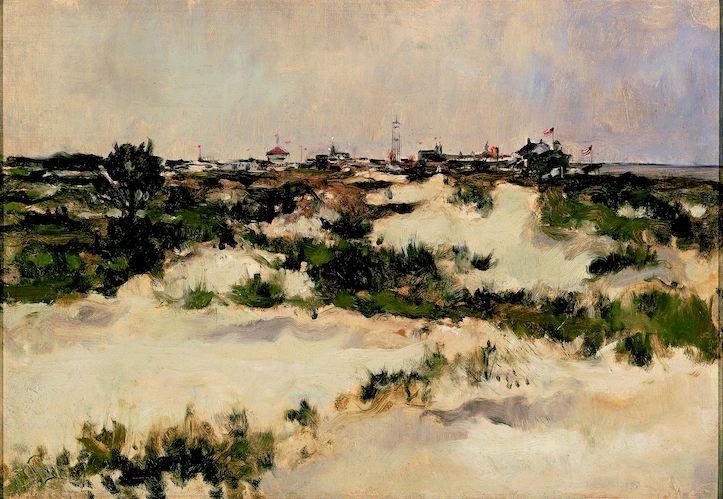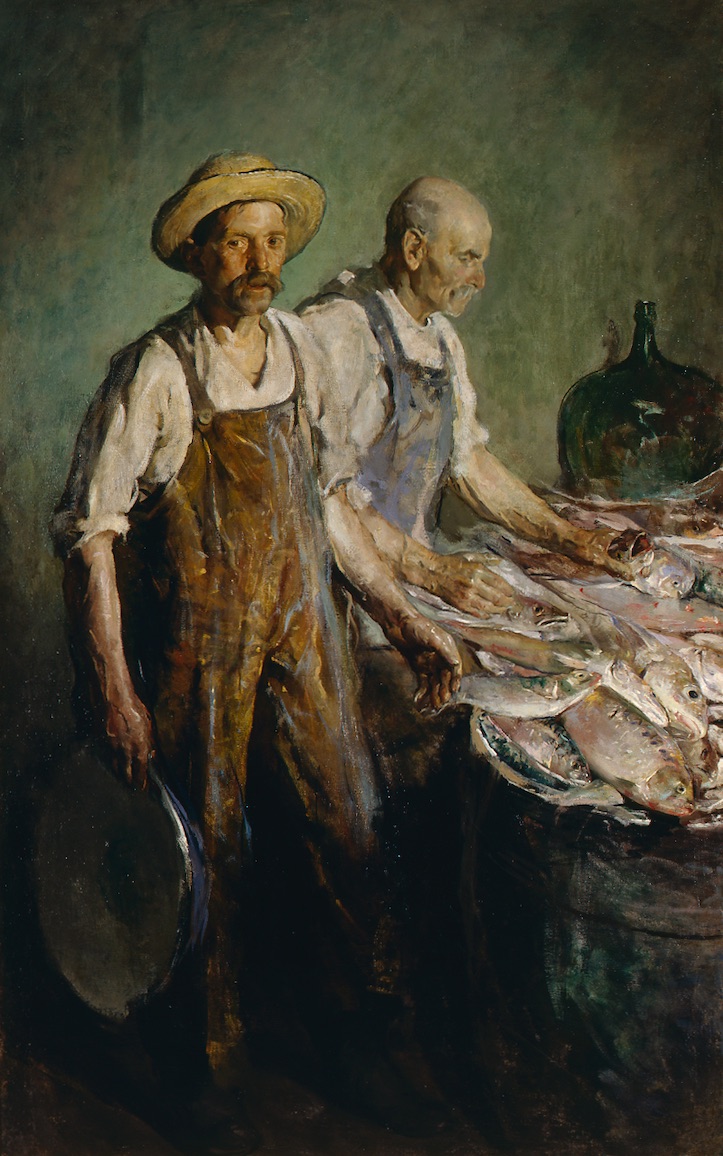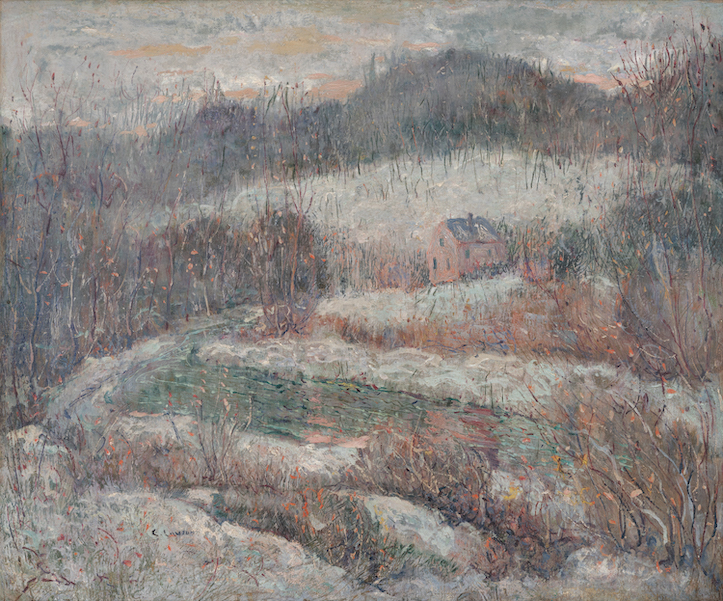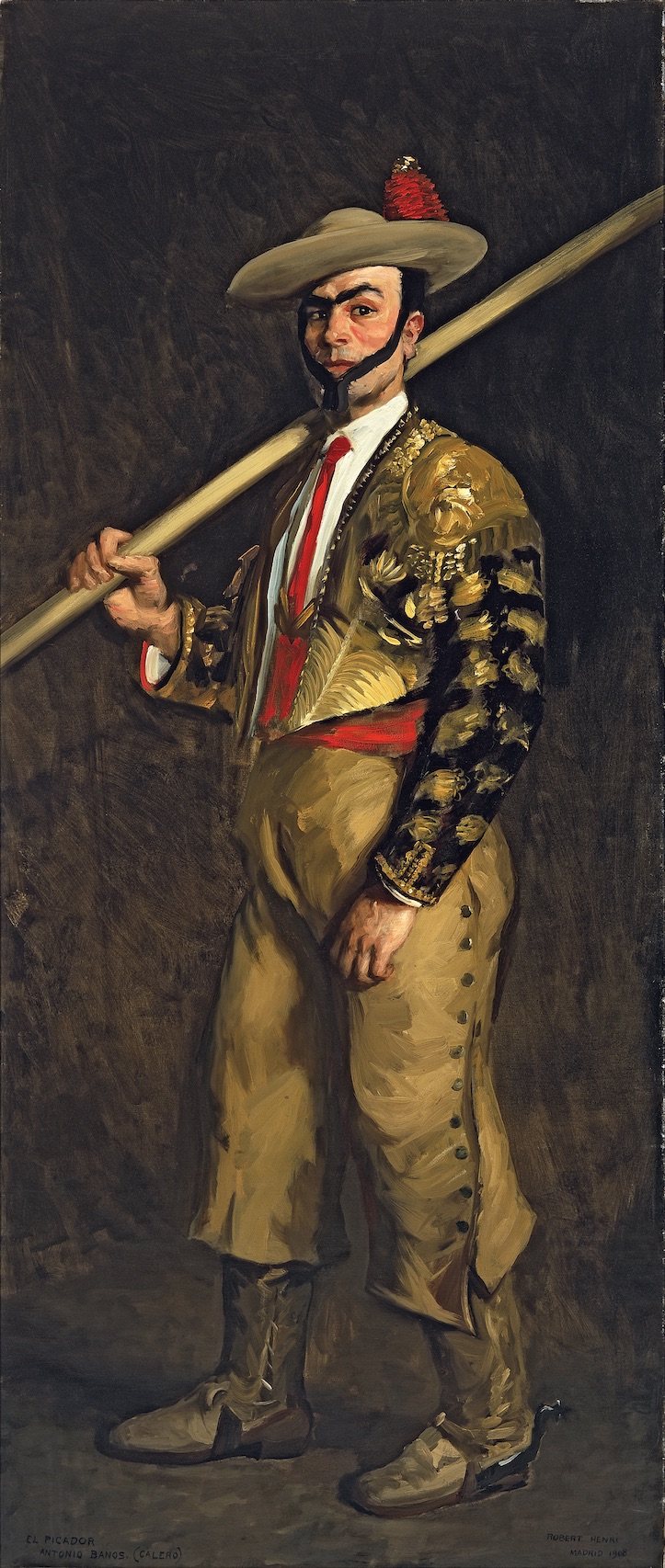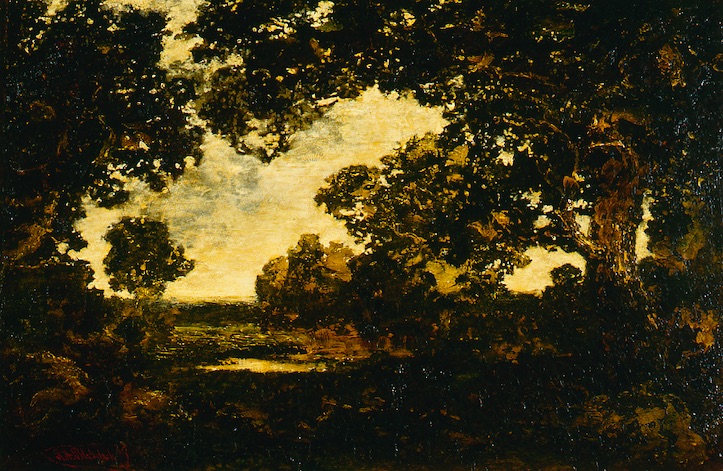End of Day: American Oil Painting Around 1900
June 15 - September 29, 2019
Drawn from the Frye Art Museum’s permanent collection, End of Day presents a selection of paintings by American artists based primarily in the northeastern United States during the late nineteenth and early twentieth centuries. The works showcase an array of painterly styles and influences, from the refined brushwork of the Hudson River School’s serene landscapes to the bold, energetic strokes of Impressionism and realism, movements that sought to freshly transcribe modern life as it appeared before the artist’s eyes. Many of the paintings were created while the artists sojourned in Europe, and together they offer a window into the cross-cultural milieu occupied by American artists at the turn of the twentieth century.
End of Day spans the fifty-year period between the Civil War and the First World War, a time of profound social, economic, and political change marked by rapid industrialization, mass immigration, and America’s rise as an international superpower. The suite of wood engravings by Winslow Homer which serve as a prelude to the exhibition—created for the popular illustrated magazine Harper’s Weekly between 1861 and 1875—draws out this larger historical context, chronicling the country’s shift from an agrarian to an urbanized society. In contrast to the narrative function of these journalistic scenes, many of the paintings hint only obliquely at these larger concerns, focusing instead on a single figure or a particular aspect of a landscape to offer sentiments that oscillate between an embrace of progress and a sense of nostalgia for what was perceived to be a simpler, bygone American era rooted in rural traditions.
The Frye Art Museum’s holdings in this area were primarily collected under the tenure of the Museum’s first director, Walser Sly Greathouse, who sought to complement Charles and Emma Frye’s Founding Collection of predominantly European oil paintings of the same period, represented in the adjacent Frye Salon presentation. The works featured in this exhibition reflect an increasing desire to paint according to one’s own beliefs and inclinations instead of strictly adhering to long-held academic principles and traditions, heralding the spirit of individualism that would come to characterize American art in the century ahead.
End of Day: American Oil Painting around 1900 is organized by the Frye Art Museum and curated by David Strand, head of exhibitions and publications, with Erin Langner, exhibitions and publications coordinator. Lead support for the exhibition is provided by the Frye Foundation. Media sponsorship is provided by KCTS 9.
John Henry Twachtman. Dunes Back of Coney Island, ca. 1880. Oil on canvas. 13 7/8 x 19 7/8 in. Frye Art Museum, 1956.010.
Charles Webster Hawthorne. Two Fisherman, 1909. Oil on linen. 79 1/8 x 49 1/2 in. Frye Art Museum, 1958.001.
Ernest Lawson. End of Day, ca. 1910.Oil on canvas. 25 x 30 1/8 in. Frye Art Museum, 1954.006. Photo: Jueqian Fang.
Robert Henri. El Picador, 1908. Oil on canvas. 87 1/2 x 37 1/2 in. Frye Art Museum, 1970.006. Photo: Richard Nicol.
William Merritt Chase. Portrait of a Lady against Pink Ground (Miss Virginia Gerson), ca. 1886. Oil on canvas. 72 x 36 in. Frye Art Museum, 1969.007. Photo: Jueqian Fang.
Ralph Albert Blakelock. Old Oaks, Sunset, ca. 1898. Oil on canvas, relined16 1/8 x 24 1/8 in. Frye Art Museum, 1960.004. Photo: Jueqian Fang.
